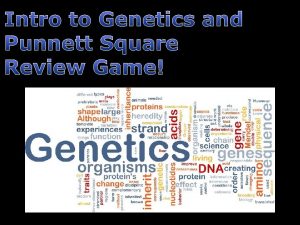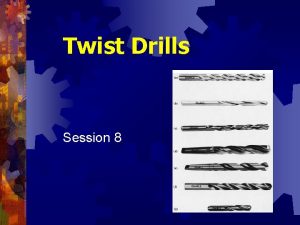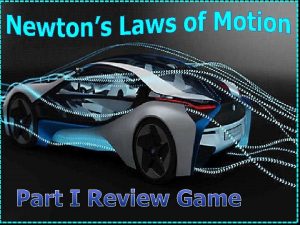The Unfair Review Game The twist is that











































- Slides: 43

The Unfair Review Game The twist is that each question is assigned a unique point value, and the point value can be positive OR negative. No one except the teacher knows the value of the question until after the answer is given. The team must decide before seeing the value of the question whether they want to keep the points or give them to the other team. Then they have to cross their fingers and hope that their choice worked out in their favor! The closest team to zero wins.

Question 1 • This tissue is responsible for shock absorption and located in the hypodermis.

• Adipose tissue (+ 10)

Question 2 • This tiny muscle pulls the hair follicle into an upright position.

• Arrector pili muscle (- 5)

Question 3 • Dense irregular connective tissue is found in which of the three major layers of the integument?

• Dermis (- 9)

Question 4 • The most abundant cells of the epidermis would be • A. keratinocytes • B. keratin • C. vitamin D

• A. keratinocytes (- 10)

Question 5 • Must be activated in the skin in order to enhance calcium metabolism. • A. keratinocytes • B. keratin • C. vitamin D

• C. Vitamin D (+ 5)

Question 6 • The protein found in the epidermis that is responsible for toughening the skin. A. Keratinocytes B. Keratin C. Vitamin D

• B. Keratin (- 7)

Question 7 • The layer of the epidermis where the cells are considered protective but nonviable. A. Suderiferous glands B. Stratum corneum C. Stratum basale

• B. Stratum corneum (+ 2)

Question 8 • The glands that serve an important function in thermoregulation. A. Suderiferous glands B. Stratum corneum C. Stratum basale

• A. Suderiferous glands (-1)

Question 9 • The layer that contains the mitotic viable cells of the epidermis. A. Suderiferous glands B. Stratum corneum C. Stratum basale

• C. Stratum basale (+1)

Question 10 • A needle would pierce the epidermal layers of the forearm in which order?

• Stratum corneum, Stratum granulosum, Stratum spinosum, Stratum basale (- 6)

Question 11 • The major regions of a hair shaft include all of the following except _________. a. Medulla b. Cortex c. External root sheath d. Cuticle

• C. External root sheath (- 2)

Question 12 • If a splinter penetrated the skin into the second epidermal layer of the sole of the foot, which cell layer would be damaged?

• Stratum lucidum (- 5)

Question 13 • The _______ gland is a modified sudoriferous gland that secretes wax.

• Ceruminous (+ 6)

Question 14 • Dermal papillae are found in which of the three major layers of the integument?

• The dermis (- 7)

Question 15 • The reason the hypodermis acts as a shock absorber is that the major part of its makeup contains _________ tissue.

• Adipose (- 7)

Question 16 • Keratinocytes are an important epidermal cell because they produce ___________.

• Keratin ( - 5)

Question 17 • The epidermis consists of five layers of cells, each layer with a distinct role to play in the health, well-being, and functioning of the skin. Which of the layers is responsible for cell division and replacement?

• Stratum basale (+ 8)

Question 18 • Sudoriferous (sweat) glands are categorized as two distinct types. What are the two types of sweat glands?

• Eccrine and apocrine (- 9)

Question 19 • Acne is a disorder associated with _________ glands.

• Sebaceous (+2)

Question 20 • Harlequin Ichthyosis is a skin disorder characterized by very thick skin that cracks all over the body. How is Harlequin Ichthyosis acquired?

• It is an inherited homozygous recessive disorder. (- 3)

Question 21 • Based on the knowledge you have about where mitosis occurs within the integument, why do cancer patients often lose their hair during treatment?

• The therapy attacks all cells in the body, including the cells in the epidermis responsible for dividing and producing new cells. (+ 10)
 The reason the hypodermis acts as a shock absorber is that
The reason the hypodermis acts as a shock absorber is that Ngoại tâm thu thất chùm đôi
Ngoại tâm thu thất chùm đôi Block xoang nhĩ độ 2
Block xoang nhĩ độ 2 Thể thơ truyền thống
Thể thơ truyền thống Thơ thất ngôn tứ tuyệt đường luật
Thơ thất ngôn tứ tuyệt đường luật Chiến lược kinh doanh quốc tế của walmart
Chiến lược kinh doanh quốc tế của walmart Tìm vết của mặt phẳng
Tìm vết của mặt phẳng Hãy nói thật ít để làm được nhiều
Hãy nói thật ít để làm được nhiều Tôn thất thuyết là ai
Tôn thất thuyết là ai Gây tê cơ vuông thắt lưng
Gây tê cơ vuông thắt lưng Sau thất bại ở hồ điển triệt
Sau thất bại ở hồ điển triệt Unfair demotion
Unfair demotion Fair and unfair trade
Fair and unfair trade Unfair trade practices examples in philippines
Unfair trade practices examples in philippines What is unfair competition
What is unfair competition Unfair commercial practices directive
Unfair commercial practices directive Strategia canvas
Strategia canvas Game twist tarot
Game twist tarot Pirate grid game
Pirate grid game The farm game board game
The farm game board game A formal approach to game design and game research
A formal approach to game design and game research Game lab game theory
Game lab game theory Liar game game theory
Liar game game theory Liar game game theory
Liar game game theory Trash ball game
Trash ball game Fikkle jeopardy
Fikkle jeopardy Genetics jeopardy review game
Genetics jeopardy review game Civil war jeopardy review game
Civil war jeopardy review game Evolution jeopardy review game
Evolution jeopardy review game World war 2 jeopardy questions
World war 2 jeopardy questions Punnett square game
Punnett square game Transformations review game
Transformations review game Introduction to functions (review game)
Introduction to functions (review game) Literary terms review game
Literary terms review game Trashketball review game
Trashketball review game 5 themes of geography review game
5 themes of geography review game Parts of speech review game
Parts of speech review game Game lucky eggs
Game lucky eggs Cell organelle jeopardy
Cell organelle jeopardy Ap world history jeopardy review game
Ap world history jeopardy review game Trashketball review game
Trashketball review game Apwh final exam review
Apwh final exam review Chapter review motion part a vocabulary review answer key
Chapter review motion part a vocabulary review answer key Ap gov final review
Ap gov final review



































































